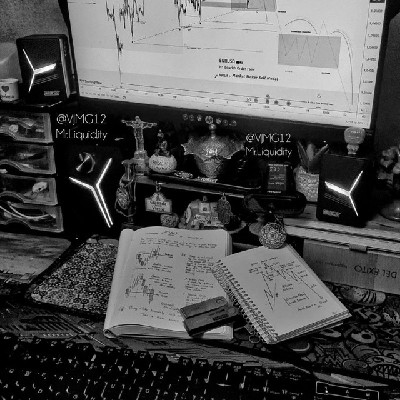ML/TWD 匯率換算器
今日Mintlayer即時價格TWD
您認為今天 Mintlayer 價格會上漲還是下跌?
Mintlayer 市場資訊
Mintlayer (ML) 簡介
什麼是 Mintlayer?
Mintlayer 是一種權益證明(PoS)Layer 2 協議,希望透過直接在比特幣上實現去中心化金融(DeFi)、智能合約、代幣化和去中心化交易等目標,來增強比特幣區塊鏈。該平台旨在利用比特幣強大的安全性和廣泛採用,同時解決其侷限性,例如缺乏智能合約功能和可擴展性問題。2024 年 1 月 29 日,Mintlayer 推出了主網。
Mintlayer 認知到了比特幣作為更廣泛、更具包容性的金融生態系基礎的潛力。作為比特幣網路側鏈運行,Mintlayer 利用獨特的共識機制,將比特幣的安全性與 PoS 系統的靈活性和可擴展性結合起來。這種方法不僅提高了交易吞吐量和效率,還為比特幣帶來了更廣泛的金融服務和應用,包括 DeFi 項目、代幣化資產等,而不影響安全性或去中心化。
相關頁面
官方文檔: https://docs.mintlayer.org/
官方網站: https://www.mintlayer.org/en/
Mintlayer 如何運作?
Mintlayer 的核心是利用複雜的比特幣錨定、檢查點和隨機選擇系統,確保其網路的完整性和安全性。Mintlayer 上的每個區塊都錨定到比特幣區塊鏈上的區塊,利用比特幣無與倫比的安全性保護自己的網路。這個過程確保了 Mintlayer 在運行其 Layer 2 功能時,可以從比特幣區塊鏈的穩健性中受益。檢查點系統使交易幾乎不可能被逆轉或篡改,進一步保護網路免受潛在攻擊,保持區塊鏈的完整性。
除了安全措施之外,Mintlayer 還引入了一種新穎的可擴展性和用戶參與方法。透過批次和動態的槽分配機制,它允許在單一操作中處理多個代幣,進而大幅降低交易成本和網路壅塞。該系統不僅提高了可擴展性,而且使網路維護的參與更加民主化。用戶可以質押 Mintlayer 原生代幣(ML)參與區塊的產生和驗證,被選中的機率與質押的 ML 數量成正比。這種質押機制目的是鼓勵社群積極參與,並確保區塊驗證和產生過程公平且去中心化。
什麼是 ML 代幣?
ML 是 Mintlayer 生態系的原生代幣,具備多種用途,包括支付交易手續費、質押參與網路,以及支援智能合約的建立。質押 ML 代幣不僅可以讓用戶幫助保護網路安全,還為他們提供了獲得獎勵的機會。此外,ML 代幣促進了 Mintlayer 生態系內的治理,讓代幣持有者在項目的開發和決策過程中擁有發言權。ML 的總供應量為 4 億枚。
Mintlayer 的價格是由什麼決定?
Mintlayer 與 Web3 生態系中的其他區塊鏈資產一樣,其價格主要會受到供需動態和其他多種因素的影響,包括最新消息、加密貨幣趨勢和加密貨幣的深入分析。投資者和愛好者密切關注加密貨幣圖表和 Mintlayer 價格預測,以評估其作為 2024 年及未來的最佳加密貨幣投資的潛力。監管變化、市場波動和包括安全性在內的加密貨幣風險,在其估值中都發揮著重要的作用。此外,Mintlayer 技術的最新發展、在加密貨幣社群中的採用率,以及更廣泛的區塊鏈採用趨勢,也都會對其價格產生重大影響。隨著加密貨幣監管的發展,上述因素共同導致了加密貨幣交易所價格的波動,想要投資 Mintlayer 的人務必要進行謹慎分析和決策。
那些對於投資或交易 Mintlayer 感興趣的人可能會想說:在哪裡可以購買 ML 呢?您可以在 Bitget 等領先交易所中購買 ML,Bitget 為加密貨幣愛好者提供了一個安全且用戶友善的平台。
Mintlayer 的 AI 分析報告
Mintlayer價格歷史(TWD)
 最低價
最低價 最高價
最高價 
Mintlayer的最高價格是多少?
Mintlayer的最低價格是多少?
Mintlayer價格預測
什麼時候是購買 ML 的好時機? 我現在應該買入還是賣出 ML?
ML 在 2026 的價格是多少?
2026 年,基於 +5% 的預測年增長率,Mintlayer(ML)價格預計將達到 NT$0.4552。基於此預測,投資並持有 Mintlayer 至 2026 年底的累計投資回報率將達到 +5%。更多詳情,請參考2025 年、2026 年及 2030 - 2050 年 Mintlayer 價格預測。ML 在 2030 年的價格是多少?
熱門活動
全球Mintlayer價格
如何購買Mintlayer(ML)

建立您的免費 Bitget 帳戶

認證您的帳戶

將 ML 兌換為 TWD
常見問題
Mintlayer 的目前價格是多少?
Mintlayer 的 24 小時交易量是多少?
Mintlayer 的歷史最高價是多少?
我可以在 Bitget 上購買 Mintlayer 嗎?
我可以透過投資 Mintlayer 獲得穩定的收入嗎?
我在哪裡能以最低的費用購買 Mintlayer?
相關加密貨幣價格
您可以在哪裡購買Mintlayer(ML)?
影片部分 - 快速認證、快速交易

ML/TWD 匯率換算器
Bitget 觀點













